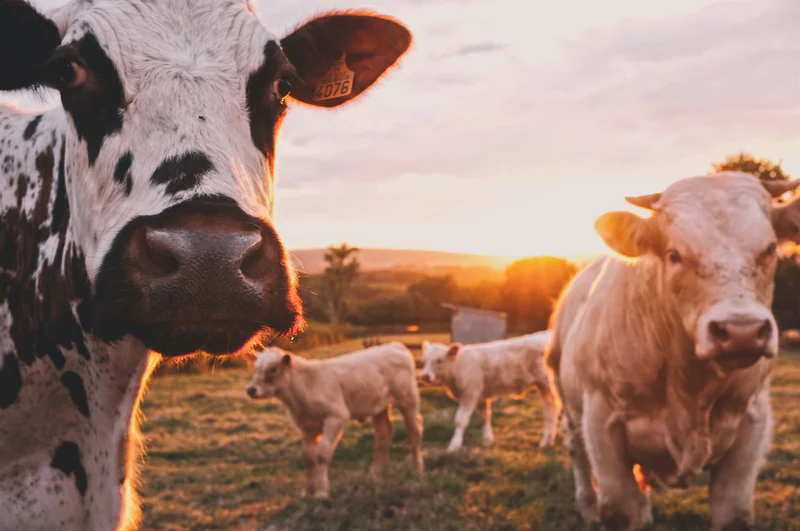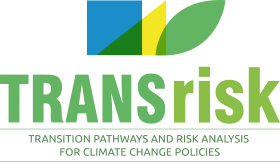Many European countries has committed to reducing greenhouse gas emissions by 80-95% in 2050, relative to 1990 emission levels as part of the Paris Agreement which set an international ambition to combat climate change. Agriculture contributed 13% of the Netherlands’ total greenhouse gas emissions in 2016 from various soruces. Within the livestock sector, GHG emission reductions will need to be viable from an economic perspective but also meet social and environmental standards.
The Netherlands, alongside many other European countries, has committed to reducing greenhouse gas (GHG) emissions by 80-95% in 2050, relative to 1990 emission levels. This commitment was made as part of the Paris Agreement which set an international ambition to combat climate change.
Agriculture contributed 13% of the Netherlands’ total greenhouse gas emissions in 2016. Emissions from this sector come from various sources:
- CO₂ emissions from agriculture are closely linked to energy use in the transportation and processing of dairy and meat.
- CH₄ predominantly relates to the livestock sector, mainly from enteric fermentation(digestive process of animals) and manure management.
- N₂O emissions stem from the management of agriculture soils, for example from use of organic and inorganic fertilisers.
A low-emission transition in this sector is clearly needed. The indicative GHG mitigation effort required from the agriculture sector is set at 3,5 Mton CO2-eq. to meet the intermediate national ambition of 49% lower CO2-eq. emissions relative to 1990.
Within the livestock sector, GHG emission reductions will need to be viable from an economic perspective but also meet social and environmental standards. It will need to ensure economic investments, create jobs and fuel economic growth all whilst minimising negative social and environmental side–effects.

A side-effect occurs when steps to reach one target (e.g. reducing unemployment), come at the expense of another (reducing greenhouse gas emissions). If the side effect is significant, or if its magnitude is unknown, it increases uncertainty within the policy and decision making process. This may in turn slow down the low-emission transition process.
With governments increasingly setting quantified targets for social, economic and environmental goals – and the increased use of policy impact monitoring – side-effects become more visible. Therefore, developing a low-emission transition pathway for livestock farming that addresses multiple development and environmental objectives (i.e. minimises side-effects and maximises co-benefits) will become one of the key challenges in the transition.
Our TRANSrisk report proposes a qualitative assessment framework for combining knowledge from different disciplines of low emission transition side-effects. The report then applies the framework in two different low-emission strategies within the livestock sector, and discusses the implications for policy making. The two transitions considered are:
- The reduction of cattle livestock within the Netherlands –involves taking approximately 50% of the total cattle herd off the domestic market by export or slaughtering.
- Digestion and processing of manure (integrated manure management) – requiring that all liquid manure from livestock in the Netherlands is digested and processed by 2030.
Evaluating potential side-effects
It is possible to evaluate the potential side-effects of individual technologies. This can be achieved through scoring it against a set of performance indicators. To identify a range of performance indicators for the livestock sector, a review of scientific, government, business and industry literature was performed. Additionally, a series of interviews with policy makers, sector representatives and researchers was carried out. Specific performance indicators for the livestock sector can be set in various areas, for example, water, soil, air quality, biodiversity and employment.
The analysis of existing technologies and practices allows for the identification of incompatibilities and unwanted side-effects that may occur when new mitigation measures are implemented alongside those that already exist.
The framework distinguishes the different levels in which an analysis of side effects can be performed. This ranges from the level of a single mitigation technology/practice to a full transition pathway that considers the impact of a combination of technologies at an international level. The evaluation becomes more complex as the assessment expands from a single technology to a full transition, with the number of interactions between actors within the systems increasing rapidly.
Discussion of results
Our report produced an extensive results table describing the potential side-effects of the two different mitigation options for the livestock sector in the Netherlands in a qualitative manner.
To illustrate, the domestic reduction of cattle farming, is expected to reduce CH4 emissions from enteric fermentation as well as from manure management. A positive side-effect is reduced use of fossil fuels. This is partly caused by a reduction in actual energy use (lower dairy and meat transport/processing emissions), as well as an increase in the production of biogas from organic residues from the food processing industries (residues typically used as feed for livestock). An adverse impact can arise from the conversion of grassland into cropland. Such land use change will likely reduce the level of carbon stored in agricultural soils.
For integrated manure management, the report anticipates a reduction of manure management related CH4 emissions as well as reduced use of fossil energy. The production of biogas from manure digestion ensures that less fossil energy is consumed. CH4 from enteric fermentation will remain at the same level, since the pathway does not affect the size of the cattle herd. No changes are anticipated for both soil related GHG impacts (i.e. soil carbon and N2O emissions).
The above shows that even within a specific impact category (i.e. GHG emissions), co-benefits and adverse side-effects exist. The report also addresses such effects for non-climate change impacts in the social, economic and environmental arena.
Our conclusions
The net GHG effect is used in this report to illustrate the expected national GHG emission change of the two mitigation pathways. However, whilst this metric indicates a reduction GHG emissions at the national level, it is not clear if this exactly translates into a reduction for either the livestock farmer, the agricultural sector as a whole and/or at the international level.

For example, in the case of a livestock farmer who has no or limited, land of their own, one of the few options to reduce their on-farm GHG emissions is to reduce CH4 emissions. Integrated manure management involves animal manure first being digested and processed rather than directly admitted to the soils causing changes in the carbon levels in agricultural soils Whilst this action may count as emission reduction on the farm, the resulting changes in soil carbon levels fall outside of their own span of control.
In certain cases, this can also occur at the global level. For example, a third party country, with lower conversion efficiencies (more resources needed to produce a certain output) and thus higher resource use per unit, could offset the GHG emissions at the international level if it replaces Dutch dairy and meat production.
Policy implications
The framework established in this report provides an innovative and structured approach to explore and discuss the side-effects of single technologies and/or full transition pathways at the (inter)national level.
Analysing potential unwanted side-effects will be useful for enabling, developing and implementing a low emission transition pathway that needs support from matching institutional and policy frameworks.
It is suggested that this assessment, completed with this framework is updated at regular intervals; for example when certain policy or other changes may influence the transition pathway.
About this article

This article is based on the TRANSrisk’s deliverable D6.4 ‘Identifying Innovation Policy Options in Transition Pathways’ seventh chapter ‘Identifying side-effects of low-emission transition pathways in livestock farming in the Netherlands to minimize policy conflicts’. This chapter was written by Eise Spijker of Joint Implementation Newtwork and Annela Anger-Kraavi of Cambridge Economics. The D6.4 deliverable is available on request.
This updates a previous article written at the early stages of the case study. This updated article was written by Ellie Leftley and Ed Dearnley at SPRU (Science Policy Research Unit) at the University of Sussex. For more information about TRANSrisk please visit our website.
Photo credits
Photo 1: Photography licensed under Creative Commons CC0.
Photo 2: Photo by Jeremy Bolwell, licensed under Creative Commons (CC BY-SA 2.0).
Photo 3: Photo by Tobias Nordhausen, licensed under Creative Commons (CC BY-SA 2.0).
TRANSrisk
Project details
- Project title: “Transitions Pathways and Risk Analysis for Climate Change Mitigation and Adaption Strategies” (TRANSrisk)
- Funding scheme: European Union Horizon 2020 Programme (EU H2020, grant agreement no. 642260)
- Duration: 3 years (1 September 2015 – 31 August 2018)
- Project coordinator: Science Policy Research Unit, University of Sussex, United Kingdom
- Project website: www.transrisk-project.eu


